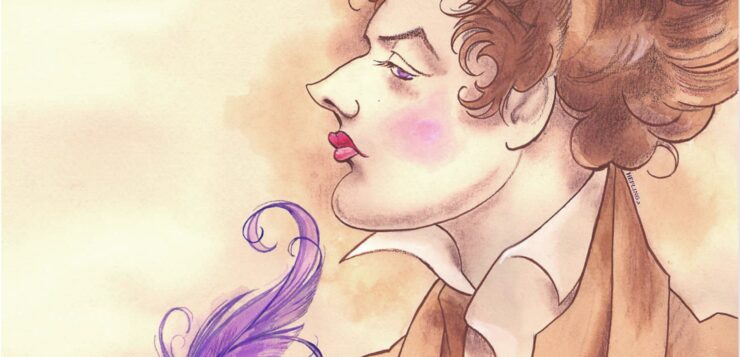LORD BYRON died 200 years ago, in 1824, at the age of 36. He succumbed to a fever in Greece, where he was helping to fund the Greek war of independence from Turkey. Today he’s more famous as a poet and a lover than as a fighter. One estimate puts Byron’s renown as a poet second only to that of Shakespeare. As a lover, Byron broke many hearts, both male and female. In the months leading up to his death, Byron had his own heart broken by a young man who didn’t love him back. Through all this, Byron had a fighting spirit that still attracts our attention.
Byron’s life has particularly inspired gay writers who came after him. Benjamin Disraeli, Oscar Wilde, Herman Melville, Henry James, and Tennessee Williams all included tributes to Byron in their work. Byron’s good looks and troubled life story have sometimes been as compelling as what he wrote. Many young men who’ve combined androgyny and an openly sexual appeal have built a following that can be traced back to a Byronic archetype. That would include James Dean, Mick Jagger, Rupert Everett, and Harry Styles.
But how can Byron have anything to say to us now?
William Kuhn, author of Swimming with Lord Byron, wrote a biography of Benjamin Disraeli called The Politics of Pleasure and a novel titled Mrs Queen Takes the Train.




